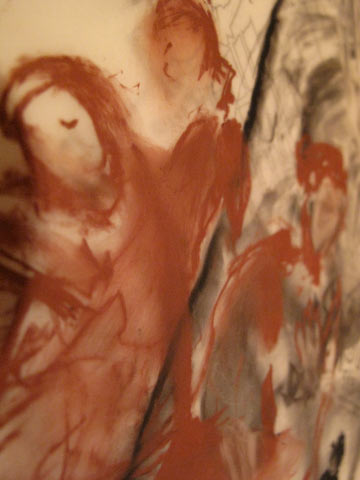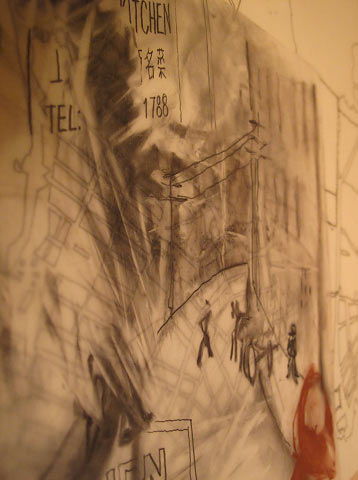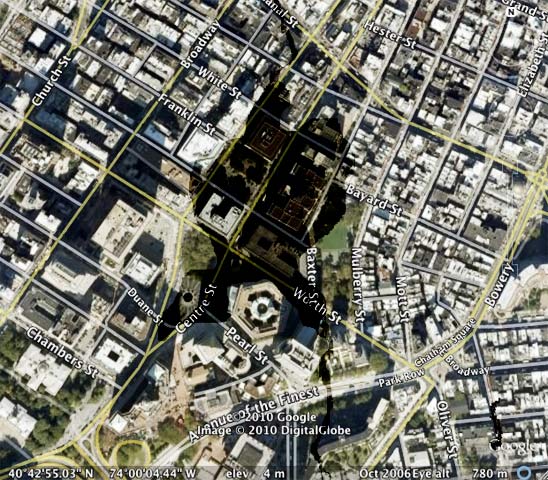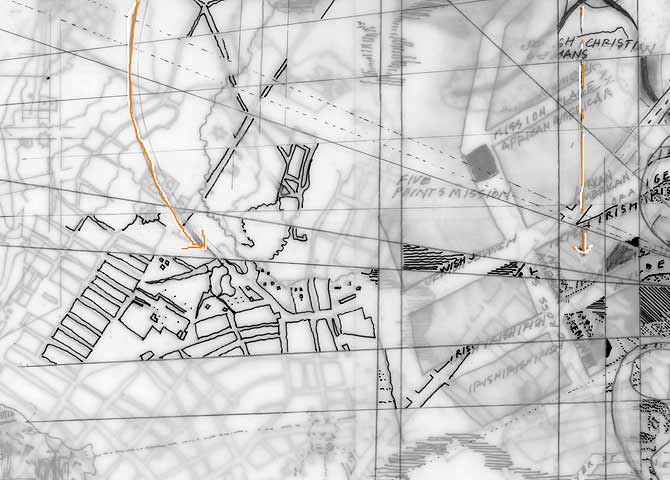
Chinatown Invisible
When investigating the complex cultural and environmental legacies of two centuries of urban landscape changes, traditional landscape architectural graphic methods prove inadequate. This is an ongoing creative project on the legacies of over two-hundred years of cultural and biophysical interplay within the site of contemporary Chinatown in Manhattan.
The ten-acre case study site has a largely unrecognized, yet highly significant place in American history, as it was once the notorious Five Points slum. The project entails a series of original hybrid maps that interpret the mostly invisible history of this site.
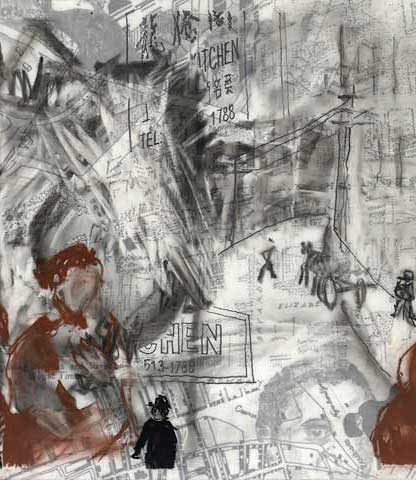
Two hundred-fifty years ago, the site of today’s Chinatown existed as farmland, marshes, and one of the only freshwater ponds on the island. In 1811, after being polluted to a dangerous degree, the pond was drained and then filled. In the 1840s, thousands of Irish families immigrated to New York, and the infamous tenements of The Five Points were built on the filled pond. This slum eventually became home to newly immigrated Jews, Germans, Italians and Chinese as well.
Almost all the thousands of residents of The Five Points were destitute, living in horrible and cramped conditions, plagued by floods and sinking structures. Ethnic tensions, gangs, and poverty were linked to outrageously high rates of disease and child mortality resulting from overcrowding.

In 1890, when the slum was more sordid, foul and notorious than it had ever been, the Danish journalist and social reformer, Jacob Riis, published a book of photographs and text illustrating and humanizing the devastating conditions in the neighborhood. In 1895, five years after Riis’s book, How the Other Half Lives, was published, the block of the worst tenements on “Mulberry Bend” was demolished. In the slum’s place a park, designed by Calvert Vaux (of Central Park fame), was built. That park, now called Columbus Park, is a place where thousands of neighborhood residents continue come to recreate and socialize each day.
The maps, photographs and drawings shown here are an effort to gain insight into a largely invisible history.
